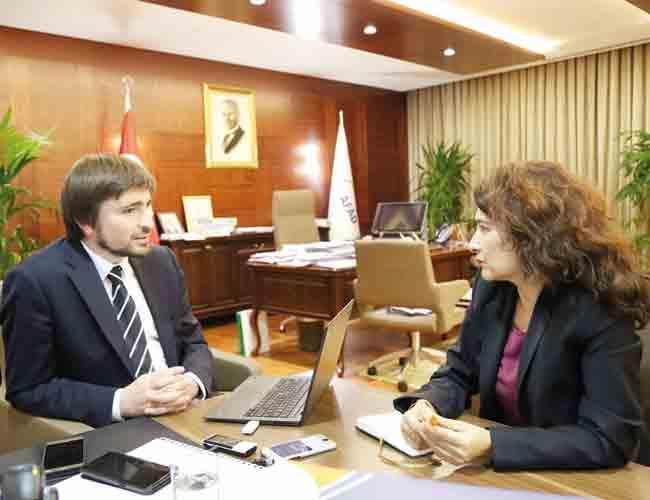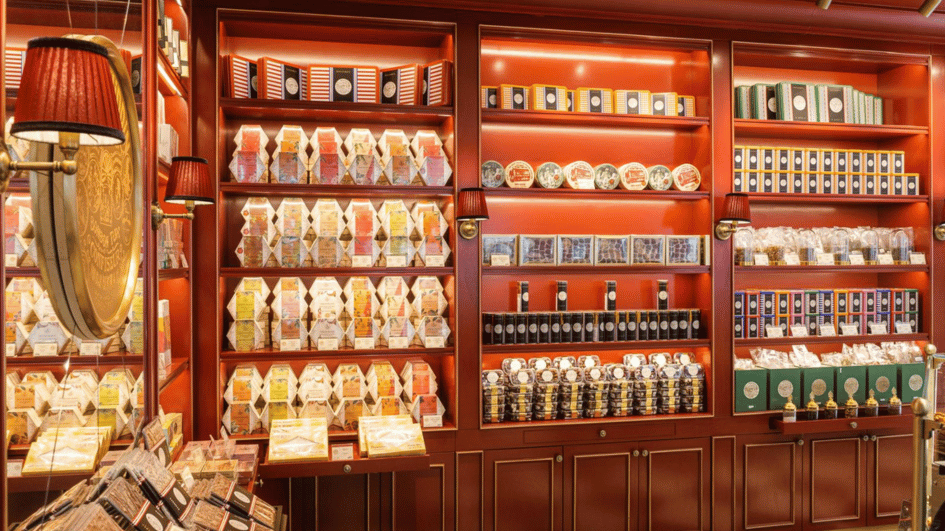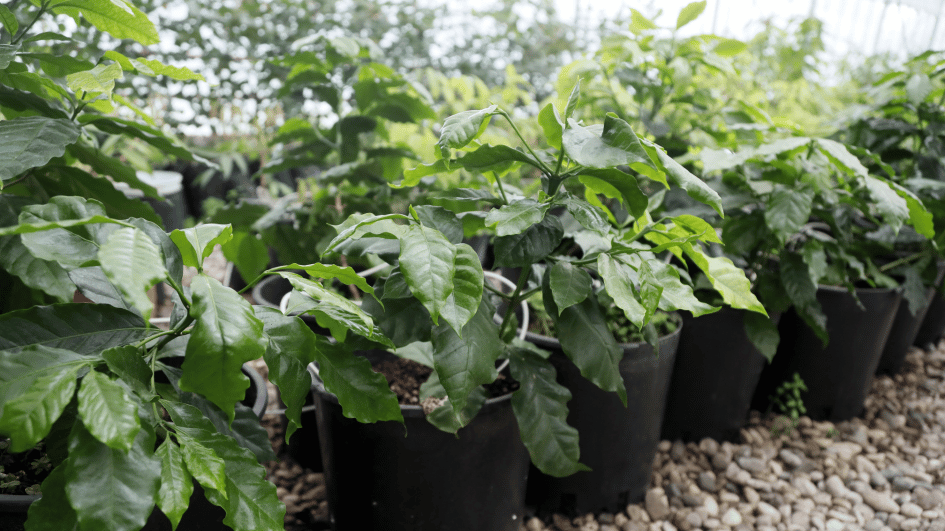Turkish aid model combines humanitarian relief with development aid
Barçın Yinanç - barcin.yinanc@hdn.com.tr

Turkey’s unique global relief efforts flow from a model that connects urgent humanitarian assistance with development aid, Prime Ministry Disaster and Emergency Management Authority (AFAD) head Mehmet Güllüoğlu has said.
“Turkey has a sustainable relief model, which includes careful budgeting. I can safely say this dynamic will continue,” Güllüoğlu told the Hürriyet Daily News, vowing that despite uncertainty in the country’s economy humanitarian assistance will not slow down.
Turkey spent close to $6 billion on humanitarian aid in 2016, second only to the U.S. What role has AFAD played in this achievement?
AFAD takes care of the “coordination dimension” of aid efforts. As the numbers of Syrians have increased, so too has the spending, though Turkish aid amounts to far more than helping Syrian refugees. Since the 2000s the Turkish economy has experienced high levels of growth and a sizeable percentage of the ever-expanding budget has been earmarked for humanitarian aid. Prior to Syria, Somalia and Afghanistan were the two largest beneficiaries of Turkish aid. Through the Turkish Cooperation and Coordination Agency [TİKA], ministries, the Red Crescent and various NGOs, Turkey has set about implementing a unique international policy.
Unique in which sense?
It prioritizes humanitarian aid. It does not view such aid as an extension of trade ties or through the prism of an international relations theory. Humanitarian aid covers urgent and short-term aid while development aid is based on technical cooperation. Turkey offers a unique model of humanitarian assistance. We don’t separate humanitarian aid from development aid. In our model, the two work together.
The Kenyan refugee camp started off sheltering 90,000 people but this number soon swelled to 500,000. Those people spend their days sitting around waiting for food. Urgent aid comes first in humanitarian assistance, but without careful planning, it also creates dependency. Turkey’s system provides food but also constructs a technical high school. The transition from urgent humanitarian to the development aid is fast.
The security protocols of global humanitarian aid actors are very rigid, which makes it hard to work in difficult terrains such as Somalia. Although we also take the necessary precautions, we are generally faster to act than others. The process does not fall prey to lengthy bureaucratic procedures. Somalia is one of our most successful models. We have been there since 2011 and the hospital is one of the biggest and best in the region.
So is AFAD coordinating this process?
AFAD organized the fund-raising campaign. Some projects were run by the Red Crescent, some by the ministries, some by NGOs.
The Turkish state often suffers from a lack of coordination.
Of course there is room for improvement. For instance, we are much better coordinated in Syria. We are starting to bring coordination mechanisms established in one zone to another zone. We also moved very fast after the [Nov. 13] earthquake in Iraq. We want our model to set an example for the world. Turkey should have a sustainable relief model, which includes careful budgeting, and I can safely say this dynamic will continue.
What countries are on the list of priorities after Syria?
Somalia, other African countries, and Asia.
What is the criteria?
In 2011 there were mass deaths in Somalia. It was an incredibly needy country. Not a single region was free from people dying of starvation. The Western media reported on the burning of villages in Myanmar.
We are taking serious steps towards establishing ourselves as the conscience of the world. When we announced the construction of a camp that could hold 100,000 people, several INGOs from across the world – and not just Muslim INGOs but Western INGOs – called us to pledge their support for our campaign. That builds trust. With the Red Crescent, governmental organizations and NGOs, Turkey is coming to the fore as a major humanitarian force. Germany is famous for producing cars. I am hoping that one day in the near future Turkey will gain recognition for its humanitarian outreach.
Becoming a brand on humanitarian relief?
Yes. Regarding Myanmar, we received messages from Canada, the U.S. and some Arab communities telling us no one was tackling the crisis apart from us.
But aren’t some international actors suspicious about Turkey’s presence in faraway geographies?
When trying to understand the actions of others, you often perceive your own intentions. Take the military bases of other countries, such as those of France in Africa. Big changes are taking place. China never had an overseas military base before, but it recently opened one in Djibouti. When you look at regions where Turkey operates, and especially the timing and the way it entered those regions, you will see strategic planning was not a factor. In fact, crisis was the main criteria. We are in Somalia because of hunger, in Bangladesh because of the pressure coming from Myanmar. The main criteria is the humanitarian situation.
Yet Turkey opened a military base in Somalia.
If you want to leave the capital city and engage in some other activity, you invariably face security risks from al-Shabaab [an al-Qaeda-allied militant group]. Security is one of the main obstacles to Somalia’s development. The main justification for the military base is that it will help Somalia to develop. Without its own police force and army, Somalia cannot rid itself of al-Shabaab and break free from a vicious cycle.
But that increases the risk of Turkey being targeted.
Yes, but you determine your league. Where do Turks position themselves? Are you an open or closed society? That determines your trade, your security risk. The U.S. is one of the most targeted countries in the world but that does not influence its foreign policy. Some cities are known for their food aid, for instance. Turkey could be identified with humanitarian relief.
In Somalia; there is a state against a non-state actor. In Myanmar it is different.
That’s why political talks have taken place with Myanmar, to push for allowing Rohingya Muslims to remain in their lands, as well as with Bangladesh to encourage the sheltering of a persecuted minority. It was not possible to change Myanmar’s stance but we have seen progress with Bangladesh, which used to say it could no longer accept refugees.
What lessons have been learnt from Turkey’s experiences as a donor?
The 2004 amendment enabling NGOs to provide aid abroad is a turning point. I think we have become very familiar with Africa over the last decade.
Let’s talk about the relief effort for the earthquake in Iraq. You intervened at a time when Turkey was upset with the Iraqi Kurdistan Regional Government [KRG].
When we flew to Suleymaniah for the first time, they said we had arrived before the central government. We delivered aid in different parts and what we heard was: “We now know who will support us in dire times.” Providing aid in disaster-stricken areas rises above political tension. We did what we had to do.
Do you think this could be an ice breaker with the KRG?
I think some positive changes were already in the pipeline. Our efforts could help matters further. U.N. agencies arrived two days later and they all noted how well we worked.
Turkey’s current cross-border operations in Syria, however, are not wanted by the Damascus regime.
The cross-border operation became a necessity when terror attacks originating in the region began to affect Turkey. The Euphrates Shield Operation was essential for Turkey’s security but also the region’s security. The Red Crescent entered Syria with its mobile kitchens a few days after the Turkish military. We started to provide relief to the needy.
The operation has helped the region get back on its feet. We have now reached the stage of reviving the health and education infrastructures. 30,000 Syrians from Turkey and 70,000 internally displaced Syrians have returned. We expect a similar process to happen in Idlib. The Euphrates Shield Operation has proved instrumental in providing security. With the Astana process underway, this could be a door opener for Idlib and other regions.
Syria is very complicated with many groups fighting each other. Isn’t there a risk of damaging the AFAD’s credibility?
Turkey supports maintaining Syria’s territorial integrity. Our aim is to help services such as education to function normally again. The administration is being transferred to local assemblies. These activities will help Syrians to govern themselves.
Which Syrians? The choice reflects a political process that goes beyond humanitarian relief.
We work closely with U.N. agencies. They are informed about our activities. At one stage we were asked about how we follow up where our aid ends up on the other side of the border. We said Turkey had two options: Either close the border and say “We cannot determine where our products are going,” or take the risk and use cross-border operations to relieve suffering. Turkey took that risk. At the end of the day, our main aim was to provide as much relief as possible.
WHO IS MEHMET GÜLLÜOĞLU?

Mehmet Güllüoğlu has been the president of the Prime Ministry Disaster and Emergency Management Authority (AFAD) since August.
He was previously the General Director of the Turkish Red Crescent since 2013, during which time he led the process of preparation and publishing of the strategic development plan of the emergency aid agency for the 2016-2020 period. Güllüoğlu graduated from Marmara University’s Faculty of Medicine and has participated in a large number of relief works within non-governmental organizations throughout his career.
He has volunteered for health operations in Palestine (the West Bank and Gaza), Egypt, Jordan, Lebanon, Syria, Qatar, Kenya and Somalia. He has also served as managing director at the Istanbul Provincial Health Directorate and the Earth Doctors Association.
















